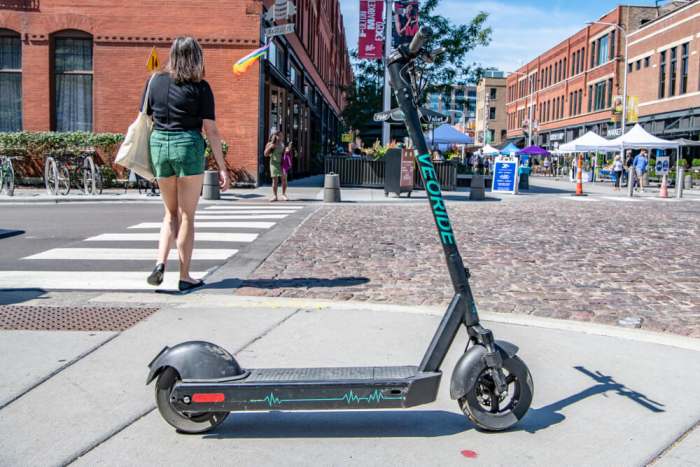
Chicago’s four-month-long e-scooter pilot program has come to an end. Data from the city showed that ridership was down by more than 20% year-over-year, due to the coronavirus lockdowns. Mayor Lori Lightfoot mandated another stay at home order effective November 16, and Governor Pritzker has closed museums, covention centers, theaters, casinos, indoor sports, indoor dining, reduced capacity at stores, and placed even stricter rules on gyms and salons. All of this reduces the need for scooter rideshare.
Since mid-August, people have used the E-scooter program 640,000 times, a drop from 821,000 times last year. Both the 2019 and 2020 pilot programs ran for four months; however, the 2019 pilot program covered an area 75% smaller, with 75% fewer scooters than this year’s pilot. That’s according to the data released by the Chicago Department of Transportation and Business Affairs and Consumer Protection. That makes the drop in ridership even more dramatic.
On the other hand, the data also showed that the average ride was 1.71 miles, 14% more than the average during the 2019 pilot program. That could indicate that people were actually commuting, rather than just trying the scooters out.
Delayed Due to the Coronavirus Response
This year’s e-scooter pilot program was put on hold for a few months, due to the coronavirus. The 2019 program ran during the summer, from June 15 to October 15; while this year’s program ran during the autumn and winter, from mid-August to mid-December. That means cold weather likely played a role in the dramatic drop in ridership.
The 2020 launch featured three companies, Spin, Lime, and Bird, operating 3,333 scooters each, for a total of nearly 10,000 scooters. The areas of the city in which the scooter companies could operate were also increased.
Last year, the scooter pilot program had 10 vendors operating 2,500 scooters in a 50 square-mile area, including parts of the West and Northwest, from Irving Park Road to the South Branch of the Chicago River. This year’s pilot more or less included the entire city, except for downtown and the Lakefront Trail. That is an area four times larger than last year’s.
Equitable Distribution of E-Scooters
The three companies were required to put half of the electric scooters in the equity priority areas of the West and South sides of Chicago. Only around 160,000 rides, or 25% of the rides this year, occurred in those areas, according to the data. Those equitable distribution regulations seem to have marginally improved transportation options in those underserved communities.
While scooter rides were down for this year, city officials indicated that changes to the program helped reduced resident complaints and sidewalk clutter; specifically, a “lock-to” requirement, making it mandatory for the scooters to have built-in cable locks for locking them to poles or bike racks. That appears to have reduced 311 service requests by a 79% drop in complaints compared to 2019.
The City Wants Your Opinion
The City of Chicago is asking for your opinion concerning the future of rentable scooters in the city. BACP and CDOT plan to evaluate the program, and will take the survey results into account, as well as ride data and feedback from the operators. The city has also partnered with UIC researchers to better understand the demographics of the riders, reasons for the trips, as well as any ideas for improving the future of the shared e-scooter service.
Residents can take part in the online survey through January 7.
After analyzing the survey data and completing the evaluation, BACP and CDOT will work with aldermen and residents to decide if e-scooters should be approved permanently. That report should be completed sometime in early 2021. Also, the raw trip data from the 2020 pilot program will be available on the Chicago Open Data Portal.









